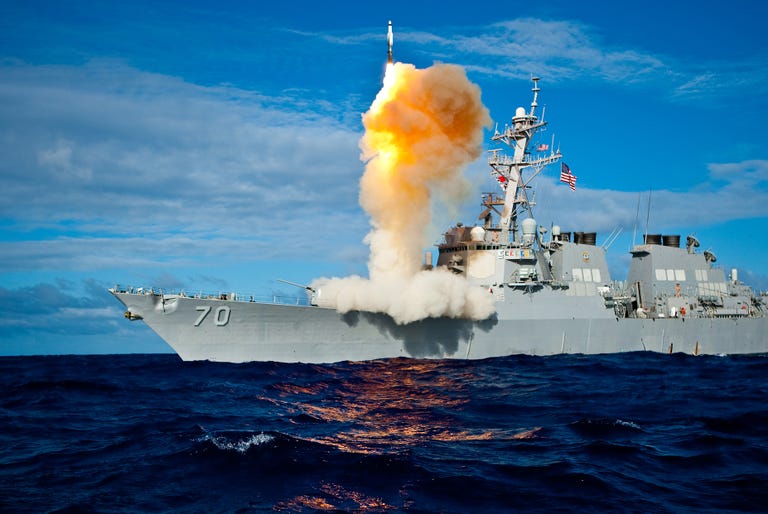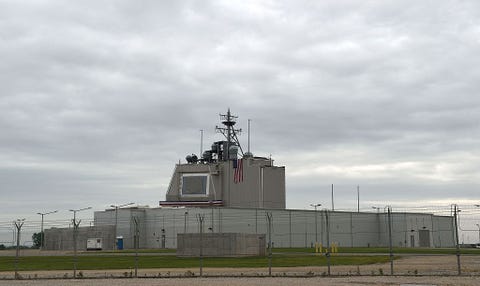The U.S. Navy Wants to Ditch Missile Defense
The ballistic missile defense mission stretches an already stretched fleet.
By Kyle Mizokami
US PACIFIC COMMAND
The head of the U.S. Navy would like to transfer the mission of ballistic missile defense to land-based forces, freeing up his ships for other missions. The remarks by U.S. Chief of Naval Operations Admiral John Richardson come as the navy is showing increasing signs of wear, the result of a shrinking fleet and growing set of responsibilities.
According to DefenseNews, Richardson told U.S. Naval War College’s Current Strategy Forum that “it’s time” to transfer the mission of defending Europe and Asia from Navy destroyers and cruisers at sea to a land-based ballistic missile defense system. Currently, the Navy has a half-dozen warships around the world patrolling the seas to defend against ballistic missile attack.
When the Navy first got this mission, it modified Arleigh Burke-class guided missile destroyers and Ticonderoga-class guided missile cruisers (and their Aegis Combat System) to track incoming ballistic missiles and tied into land-based radars. The Pentagon modified the Standard air defense missile to create the new SM-3 ballistic missile interceptor. The result was a mobile ballistic missile platform that could change position depending on the threat.
In the meantime, however, the Navy has became increasingly busy, responding to the growing and increasingly assertive Russian and Chinese forces, North Korean nuclear and ballistic missile threats, and even piracy in the Gulf of Aden. What's more, the Navy took on those missions and more while shrinking in terms of personnel and ships.
In 2000, the U.S. Navy had 318 ships in the fleet; today, that number is 284. U.S. Navy forces, especially forward-deployed forces such as the Japan-based 7th Fleet, fell under a tremendous strain. One outcome of this was the twin collisions at sea involving the destroyers USS Fitzgerald and USS McCain, with lethal consequences for American sailors.

Aegis Ashore Romania.
GETTY IMAGESDANIEL MIHAILESCU
In the years since the Navy was assigned the ballistic missile defense (BMD) mission, the technology has advanced to a point where land-based defenses can accomplish the same task. Aegis Ashore, a land-based version of the Aegis Combat System, comes with radars and SM-3 interceptors. The latest versions of the SM-3 have longer ranges, allowing a single Aegis system, whether based on land or at sea, to cover a much larger area. An Aegis Ashore facility was recently completed in Romania, protecting NATO from missiles launched from the Middle East, and Japan plans to purchase two systems to defend against North Korean and Chinese missile attack.
A land-based Aegis Ashore system has several benefits. For one, it’s cheaper—basically a building with a large radar and some missile silos for interceptors. Second, it requires less manpower than a warship. Third, it can protect a location just as well as a ship, and has the advantage of being permanently on station, seven days a week, 365 days a year.
The U.S. Navy doesn’t have the benefit of being able to step back from many missions, but building out a handful of Aegis Ashore facilities (which are still manned by the Navy) is a cost-effective idea that bears further scrutiny.
No comments:
Post a Comment